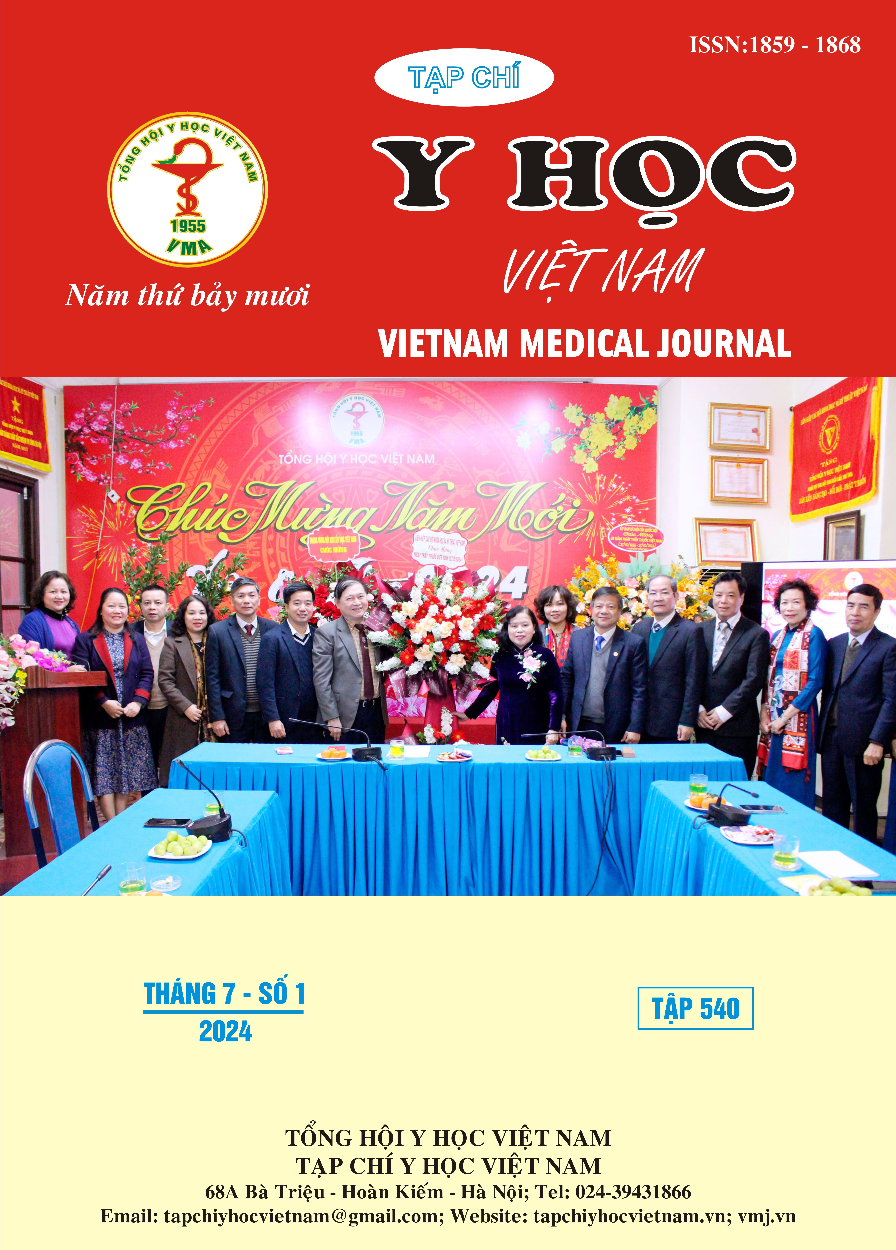CHARACTERISTICS OF PATIENTS WITH BEE STINGS AND RESULTS OF THE TREATMENT AT NGHE AN GENERAL FRIENDSHIP HOSPITAL
Main Article Content
Abstract
Objective: To evaluate clinical characteristics, laboratory abnormalities and treatment results of patients with bee stings treated at the Poison Control Department of Nghe An General Friendship Hospital. Subjects and methods: prospective descriptive study on 115 patients with bee stings in 2 years 2022 and 2023. Results: Bee stings occurred mostly in men (68.7%), with average age was 50.05 ± 20.55. The main culprit bees were bumblebees (82.6%). The common manifestations were rhabdomyolysis (57.3%), acute liver injury (26.7%), acute kidney injury (25.3%), hemolysis (14.7%), and DIC (10.7%). Treatment included forced diuresis (82.6%) and hemodialysis (20%), corticosteroids (78.7%), and antihistamines (74.7%). The other supportive treatments were blood product transfusions (16%), mechanical ventilation (9.3%) and vasopressors (8.0%). After treatment, 93.3% of the patients were improved. Hospital duration were mostly not long (64% of the patients were discharged within 4 days). The mortality rate was 3.5%. Conclusions: The study has shown the main characteristics of bee stings, characteristics of patients and treatment results at the Poison Control Department of Nghe An General Friendship Hospital
Article Details
Keywords
Bee stings, clinical, laboratory, treatment
References
2. Hà Trần Hưng, Lê Duy Bình (2016). Đặc điểm và kết quả điều trị bệnh nhân bị ong đốt nhiều nốt. Tạp chí Y học Bệnh viện Bạch Mai số 93 (4/2016).
3. Persson HE., Sjoberg GK., et al (1998). Poisoning severity score. Grading of acute poisoning. J Toxicol Clin Toxicol, 36 (3), 205-213.
4. Vincent JL., Moreno R., et al (1996). The SOFA (Sepsis-related Organ Failure Assessment) score to describe organ dysfunction/failure. On behalf of the Working Group on Sepsis-Related Problems of the European Society of Intensive Care Medicine. Intensive Care Med, 22 (7), 707-710.
5. The ARDS Definition Task Force (2012). Acute respiratory distress syndrome: The berlin definition. JAMA, 307 (23), 2526-2533.
6. Levi M., Toh CH., et al (2009). Guidelines for the diagnosis and management of disseminated intravascular coagulation. British Committee for Standards in Haematology. Br J Haematol, 145 (1), 24-33.
7. Witharana EW., Wijesinghe SK., et al (2015). Bee and wasp stings in Deniyaya; a series of 322 cases. Ceylon Med J, 60 (1), 5-9.
8. Vũ Tuấn Dũng (2010). Đánh giá hiệu quả của bài niệu tích cực trong dự phòng và điều trị suy thận cấp do ong đốt. Luận văn thạc sỹ y học Đại học Y Hà Nội.
9. Franca FO., Benvenuti LA., et al (1994). Severe and fatal mass attacks by “killer” bees (Africanized honey bees--Apis mellifera scutellata) in Brazil: clinicopathological studies with measurement of serum venom concentrations. Q J Med, 87 (5), 269-282.


